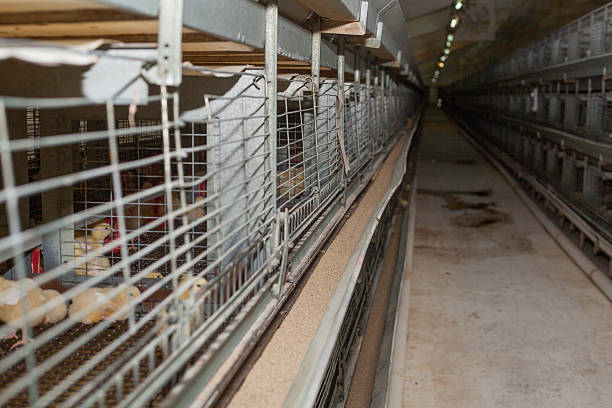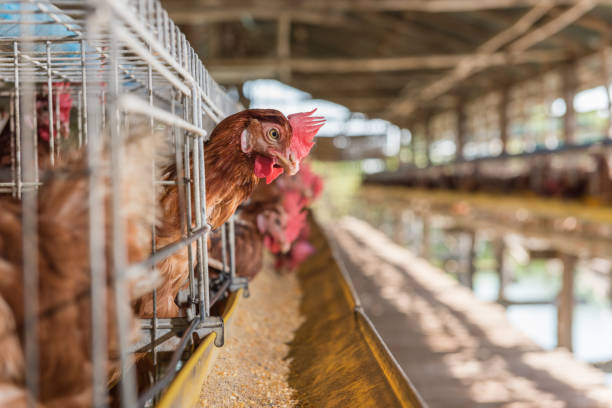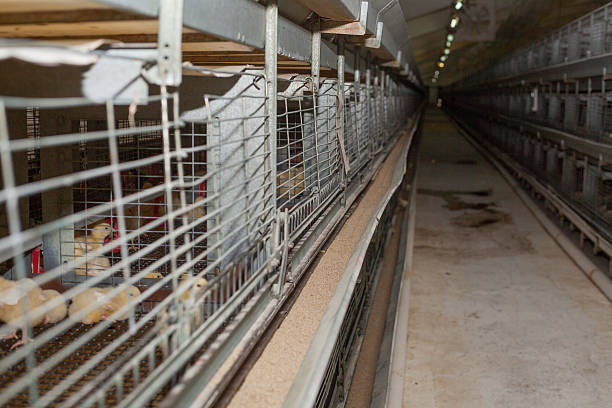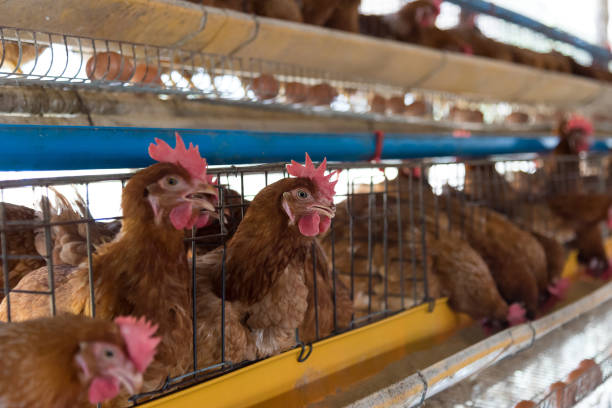Understanding Automatic Poultry Cage Prices: A Guide for Your Poultry Farm
Understanding Automatic Poultry Cage Prices: A Guide for Your Poultry Farm
Setting up a poultry farm is a significant investment, and understanding the costs involved is crucial for success. One of the major expenses is the poultry cage system, especially if you’re considering automatic systems. Automatic poultry cages offer numerous benefits, from increased efficiency to better bird welfare, but they also come with a higher price tag than traditional methods. This guide will help you navigate the world of automatic poultry cage prices and provide you with the information you need to make informed decisions for your poultry farm.
What are Automatic Poultry Cages?
Before diving into the costs, let’s clarify what we mean by automatic poultry cages. These systems are designed to automate key aspects of poultry farming, reducing the need for manual labor and improving overall productivity. Features can include automatic feeding, watering, egg collection, and manure removal. The level of automation can vary, impacting both the price and the benefits.
Automatic Feeding Systems: These systems deliver feed to the chickens at pre-set times and in specific quantities, ensuring consistent nutrition and minimizing waste.
Automatic Watering Systems: Nipple drinkers or similar systems provide a constant supply of fresh water, reducing the risk of contamination and ensuring optimal hydration for the birds.
Automatic Egg Collection Systems: These systems gently collect eggs from the cages and transport them to a central collection point, reducing cracks and breakages.
Automatic Manure Removal Systems: These systems remove manure from the cages regularly, improving hygiene and reducing ammonia levels, which can negatively impact bird health.
Factors Influencing Automatic Poultry Cage Prices
Several factors influence the price of automatic poultry cages. Understanding these factors is vital for budgeting and choosing the best system for your specific needs.
Cage Type:
Layer Cages: Designed for egg-laying hens, layer cages are structured to maximize egg production and ease of collection. They are typically tiered to save space.
Broiler Cages: Designed for meat chickens, broiler cages prioritize rapid growth and efficient feeding. They often have different flooring and space requirements.
Chick Cages: Used for raising young chicks, these cages provide a safe and controlled environment to promote healthy development.
The type of bird you are raising will greatly influence the cage design and therefore, the overall cost.
Size and Capacity:
The size of your operation is a major determinant of cost. A small-scale farm with a few hundred birds will require a much smaller and less expensive system than a large commercial farm with thousands of birds. Cage capacity, or the number of birds per cage, also affects the price. Higher capacity cages may be more cost-effective per bird, but it’s important to consider bird welfare and space requirements.
Level of Automation:
The degree of automation directly impacts the price. A fully automated system with automatic feeding, watering, egg collection, and manure removal will be more expensive than a semi-automatic system. However, a fully automated system will also offer greater labor savings and efficiency in the long run. Consider which aspects of your operation you want to automate and choose a system that aligns with your budget and goals.
Material and Build Quality:
The materials used in the construction of the cages affect their durability and lifespan. Galvanized steel is a common choice due to its resistance to corrosion. However, the quality of the galvanization and the overall build quality can vary. Investing in higher-quality materials and construction may cost more upfront but can save you money in the long run by reducing the need for repairs and replacements.
Manufacturer and Brand:
Different manufacturers offer different price points and quality levels. Established brands with a reputation for reliability and customer service may charge more, but they also offer greater assurance of quality and support. Research different manufacturers, read reviews, and compare warranties before making a decision.
Installation Costs:

Don’t forget to factor in installation costs. Automatic poultry cage systems require professional installation to ensure proper function and safety. The cost of installation will vary depending on the complexity of the system and the location of your farm. Get quotes from multiple installers and factor this cost into your overall budget.
Transportation Costs:
The distance your cages need to be transported from the manufacturer to your farm impacts the final price. This is particularly important if you are sourcing cages from overseas. Shipping costs can vary greatly depending on the size and weight of the cages, as well as the mode of transportation (sea, air, or land).
Estimating the Cost of Automatic Poultry Cages
While it’s difficult to provide an exact price without knowing the specifics of your operation, here are some general estimates to give you an idea of the costs involved:
Small-Scale Farm (100-500 birds):
Semi-automatic cages: $5,000 – $15,000
Fully automatic cages: $15,000 – $30,000
Medium-Scale Farm (500-2,000 birds):
Semi-automatic cages: $15,000 – $40,000
Fully automatic cages: $40,000 – $80,000
Large-Scale Farm (2,000+ birds):
Semi-automatic cages: $40,000+
Fully automatic cages: $80,000+
These are just estimates, and the actual cost may vary depending on the factors mentioned above. It’s crucial to get quotes from multiple suppliers and compare the features, quality, and warranty of each system.
Benefits of Investing in Automatic Poultry Cages
While the initial investment may seem high, automatic poultry cages offer numerous benefits that can offset the cost over time.
Increased Efficiency:
Automation reduces the need for manual labor, allowing you to manage a larger flock with fewer workers. Automatic feeding and watering systems ensure consistent nutrition and hydration, leading to better growth rates and egg production. Automatic egg collection systems minimize egg breakage and labor costs.
Improved Bird Welfare:
Automatic manure removal systems improve hygiene and reduce ammonia levels, leading to healthier birds. Consistent access to food and water ensures optimal nutrition and hydration. Properly designed cages provide adequate space and comfort for the birds.
Reduced Labor Costs:
Automation significantly reduces the need for manual labor, freeing up your workers to focus on other tasks, such as monitoring bird health and managing the overall operation. This can lead to significant cost savings over time.
Better Egg Quality:
Automatic egg collection systems minimize egg breakage and contamination, resulting in higher-quality eggs. This can lead to higher prices and increased profitability.
Enhanced Biosecurity:
Automatic systems can help to improve biosecurity by reducing the need for human contact with the birds. This can help to prevent the spread of diseases and improve overall bird health.
Making the Right Choice for Your Farm
Choosing the right automatic poultry cage system for your farm is a complex decision that requires careful consideration of your specific needs, budget, and goals. Here are some tips to help you make the right choice:
Assess Your Needs:
Determine the size of your operation, the type of birds you will be raising, and the level of automation you require. Consider your labor costs, biosecurity concerns, and desired egg quality.
Set a Budget:
Determine how much you are willing to invest in a poultry cage system. Be realistic about the costs involved and factor in installation, transportation, and maintenance expenses.
Research Different Suppliers:
Get quotes from multiple suppliers and compare the features, quality, and warranty of each system. Read reviews and talk to other poultry farmers to get their opinions on different brands and models.
Consider the Long-Term Costs:
Don’t just focus on the initial purchase price. Consider the long-term costs of maintenance, repairs, and energy consumption. Choose a system that is durable, energy-efficient, and easy to maintain.
Visit Farms with Similar Systems:
If possible, visit farms that are using the same type of automatic poultry cage system you are considering. This will give you a chance to see the system in action and talk to other farmers about their experiences.
Consult with Experts:
Consult with poultry experts or agricultural engineers to get their advice on the best system for your specific needs. They can help you assess your needs, set a budget, and choose a system that will maximize your profitability.
Financing Options

Investing in automatic poultry cages can be a significant expense, and many farmers need to explore financing options. Here are some common financing options:
Loans: Banks and other financial institutions offer loans specifically for agricultural equipment. These loans typically have competitive interest rates and repayment terms.
Leasing: Leasing is another option that allows you to use the equipment without owning it outright. This can be a good option if you don’t want to tie up your capital in a long-term investment.
Government Grants and Subsidies: Many governments offer grants and subsidies to support agricultural development. These programs can help to offset the cost of investing in new equipment.
Manufacturer Financing: Some manufacturers offer financing options directly to their customers. This can be a convenient option, but be sure to compare the terms and interest rates with other financing options.

Conclusion
Investing in automatic poultry cages can be a game-changer for your poultry farm. By automating key aspects of your operation, you can increase efficiency, improve bird welfare, reduce labor costs, and enhance biosecurity. While the initial investment may seem high, the long-term benefits can outweigh the costs. By understanding the factors that influence the price of automatic poultry cages and carefully considering your specific needs, you can make an informed decision that will help you maximize your profitability and achieve your goals. Remember to research different suppliers, get quotes, and consult with experts before making a final decision. With the right automatic poultry cage system, you can take your poultry farm to the next level.





